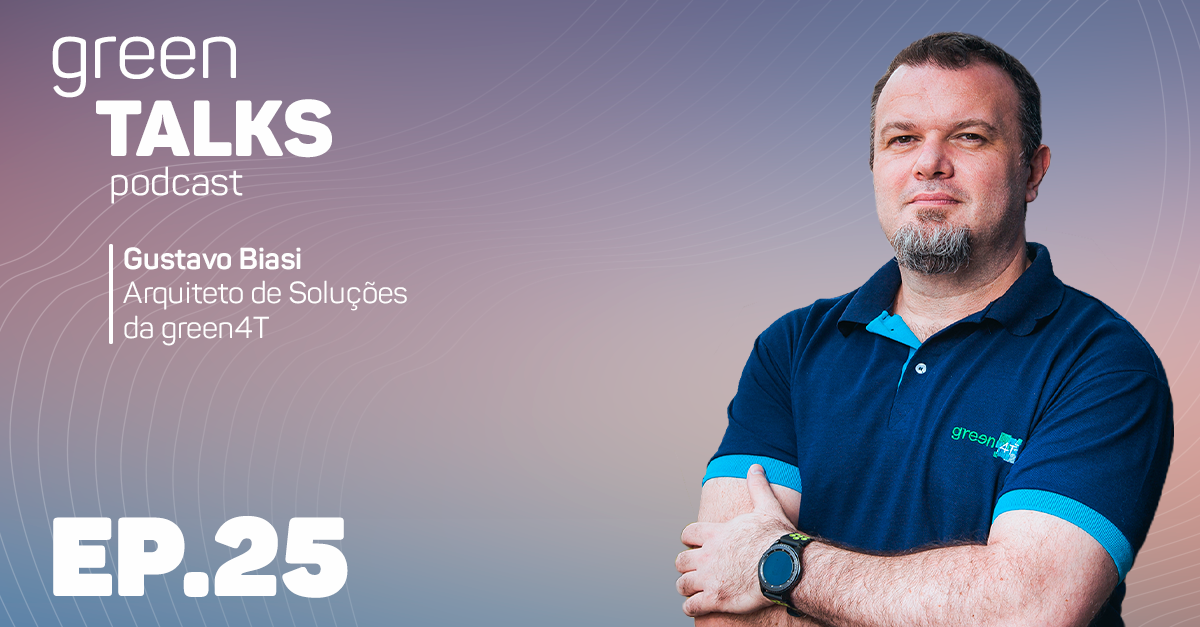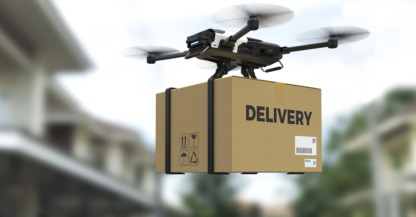Should I migrate all of my company’s data processing to the cloud? And to which type: public or private cloud? What workload profiles can I keep on premise? And if it goes wrong, is it costly to repatriate everything?
The cloud migration process still raises many questions about how, when and why to do it. In spite of its advantages and disadvantages, it is important to know whether it is worthwhile betting all your chips on the cloud as one single strategy. “That’s because not all solutions were made for all companies. You need to understand that each company has different workloads with different needs”, explains Gustavo Biasi, Solutions Architect at green4T. For this specialist, the path should be hybrid, with a combination of resources in the cloud – public and private – and on premise. But, before defining the destination, the workloads must be carefully analyzed and tools and processes that give efficiency to the strategy must be adopted, mitigating, as much as possible, the risk of processing repatriation. Biasi talks more about this topic in the following interview, with journalist Fabiano Mazzei, for the podcast greenTALKS. Read below.
Fabiano Mazzei: Hello, welcome to another episode of our podcast greenTALKS. Remember that this content is available also on the green4T channel on YouTube, on our blog Insights and here on Spotify. In this episode, we’ll talk about “How to prepare your journey to the hybrid cloud and avoid risks”. Our guest is Gustavo Biasi, Solutions Architect at green4T. Gustavo, thank you for accepting our invitation and welcome to our podcast.
Gustavo Biasi: Thank you, Fabiano. I enjoy this subject very much, and I’m very happy to participate in your podcast.
Fabiano: Good, so let’s get started. I would like you to evaluate a recent context, in which cloud computing was shown as “one single strategy” to solve all the data processing issues of companies. How do you analyze this?
Gustavo: Well, first of all, it’s very interesting to see how some trends come and go – and one of the most important roles of those who have this vision of a solution architect is to understand how we could best use each of these resources at different times. When the cloud appeared, it was advertised as a disruption that gained momentum supported mainly by hyperscallers and large consulting firms, also pointing to the possibility of “paying as you go”, and a multitude of innovations.
Some companies are early adopters, i.e. they are “cloud native”, and most of them works only with data and for the industry – manufacturers, healthcare, when we talk about other industries that have products and production lines – the CIOs, the technology support teams, saw there the possibility to surf on this wave. Many CXOs, if we think this way, bought the idea and obviously used “cloud first driver” to make their innovations and so on.
But, with time, we were obviously taking advantage of the possibilities and understood that not all solutions were made for all companies. We have to consider that each company has different workloads, with different needs, so we started to reassess the associated costs. Obviously, it is pay as you go: if you need processing, you will have to pay for it. And it is cost: from the moment we began to analyze the processing costs, and how it is used, the costs we call data egress – when you need to retrieve data –, we began to notice that it was very costly. And those same consulting firms that helped large companies define their strategies for the future, drawing “road maps”, began to reassess this. So much so that one of them, which had simply set the death of data centers, has already started to bring back this information that in fact its data center has not died, but that it will change. It will be renewed and that’s what we see: the resources inside data centers had their use modified precisely to align them with this talk about hybrid use.
Fabiano: Perfect. Speaking about it, why has the hybrid journey been more assertive?
Gustavo: This is a good question because many people who bet all their chips on the cloud realized that the costs for certain resources can be better used, in more optimized way, when they are available on premise or within your line. Some factors such as latency of applications, broadband or the difficulties you have in certain locations because of connectivity restrictions – and we have been talking a lot about connectivity these days, linking public and private clouds to system as a service and platform as a service – ended up showing that it is better to look at each of these workloads, since, because they are different, they will have different ways of being used. And the journey to the hybrid cloud we have been talking about today is the future. Everyone understands that the future is hybrid and can prove it. Costs improve, you can leverage not only the ability to use these resources, but also how to support them, the same way as certain systems that you pay as you go, while maintaining the high availability needed for a conveyor, for a line, even for part of a scale system that cannot stop or for the issue of invoices. This is very interesting: we are looking again at each workload to determine the best solution and, in the end, this is it: the future is hybrid.
Fabiano: You have been stressing this: the definition of workloads. And I ask you what would be the steps to prepare for this journey towards the hybrid cloud?
Gustavo: Well, it’s very important to understand that companies have their production flow and based on that – we are talking about entry of materials, and the entire processing to get to the final product – they determine the stages, the guidelines and, obviously, the processing points. The workloads – precisely the processing points within the IT environment – have different needs and listing these points are important, but not just that. From the moment you have information on the journey that you want to take, you have to define a strategy, you need to establish that the future will largely depend on data processing and this has to be linked to a message to the company. That’s why we have the “CBO”, a very important market nomenclature that means Cloud Business Office. This entity, in a manner of speaking, establishes a starting point for the cloud message to the entire company.
Fabiano: Could you explain what exactly the Cloud Business Office does?
Gustavo: If I were to explain Cloud Business Office (CBO) in a more simplified manner would be like this: a center within the company responsible for spreading the cloud message to the entire company. When we talk about journey to the cloud, we are not talking just about IT resources, but also about changes in important processes – and sometimes in the company business model. And all those processes that will change, with new teams working or new products that will be created, need sponsors, i.e. those responsible for spreading this message.
Fabiano: When you talk about sponsors, are you talking about creating a new department within the company?
Gustavo: : It is not necessary to create a new department, although some roles may be necessary – and green4T can help you with this. But sponsors for the Cloud Business Office can include positions at the Board level, because it is necessary to have someone who has a vision of the journey, could advocate the ideas and even share these needs with the board in order to take this journey in the best possible way. We need to have people who will look at some matters relating to security, not just of IT, but data and information security. And at the HR function too, after all, it impacts the BUs as well. So, it is necessary to look at all this using a well-designed strategy that is aligned with the Cloud Business Office, in order to define the steps required for this journey, and this message will be taken to the entire company.
Fabiano: This also helps align the IT strategy with the business strategy, right?
Gustavo: Correct, we often create new products precisely because of that. From the moment you have a production that is slightly more agile, you begin to see that you can improve some steps and – within the B2B – provide certain access at certain points of the chain, not only to obtain information, but different ways to access it, and you end up with new possibilities. Nowadays, you can monetize your production. And this is all a message from the Cloud Business Office.
Fabiano: Very well, within this context of the journey towards the hybrid cloud, we understand that this process brings a clear risk, which is the repatriation of data processing. How can we avoid a high risk?
Gustavo: Repatriation of data, machines and workloads is something that we see in any IT portal. We have realized that many companies are conducting the repatriation process, which is very interesting because of this: the processes have been changing, the ways you consume all that have been changing, and when you realize that you could do this differently and establish your steps, your milestones, and achieve that, you realize the value of it all – and the repatriation happens. Some companies have moved certain workloads that were not suitable for a cloud – some pieces of data, backup, without looking at their utilization. green4T has tools and people that help in this repatriation process, but it is very important to point out that, with a process, with an designed strategy – in which you do the TCO (Total Cost of Ownership) and understand the use of your resources – you can reduce the high egress rates, which is when you have to redownload the information you uploaded in the cloud, or bring back servers, services or applications. The availability also counts: for example, some monolithic production environments that are 24/7, and are necessary for your chain, could be kept within your on premise environment, while you take the development and quality insurance environments to the cloud, as they will not need availability and could run 8×5, for example. These are TCO studies that we conduct to check if those solutions are the most appropriate. Sometimes transforming all of this to a PaaS or SaaS, after analyzing it all, is the best way to avoid this risk of repatriation.
Fabiano: Let me take this cue here and talk about how green4T can help with this strategy, thinking about customized solutions. What could we offer in this process?
Gustavo: Well, it is important to emphasize that, when we are designing this journey, we have to think very carefully about what is necessary. When we talk about orchestration, about defining this journey, we need people, processes and tools. And green4T is very well prepared for this: we analyze and perform a full assessment, the assessment of workloads that companies have, check whether they are in the best condition to be used, and based on that, determine where those workloads could be taken: PaaS, as I said, or be kept in an infrastructure on premise. And how do we do this? With people, processes and tools. And we have both people and processes, especially for the analysis of origin and destination, application of standards in relation to this, and we now have a fantastic orchestration tool that we use for in-house cloud brokerage, with which we do the “end to end” journey to the cloud, if we could say so. Although the journey to the cloud is a “beginning and middle” journey, green4T can advise our customers and analyze all the activities required not only for the journey, but for the migration or transition of those workloads between different origins and destinations. Even repatriation is something that we can do, precisely because of that and, above all, customers can rely on the managed services of those workloads that, regardless of where we are, we can monitor in or out, either in the public or private cloud.
Fabiano: Very well, unfortunately we need to end this episode, but this conversation was great and very informative. Today, we talked with Gustavo Biasi, Solutions Architect at green4T, about “How to prepare your journey to the hybrid cloud and avoid risks”. Gustavo, once again, thank you very much for your presence. It was a pleasure. I hope you come back here to greenTALKS.
Gustavo: I should thank you. I’m here to help, you only need to call.
Fabiano: Perfect. That’s all, if you enjoyed this episode, post a like, share it, and follow our YouTube channel and our social networks, which always bring relevant content about technology. Thank you for hearing and see you next time.



